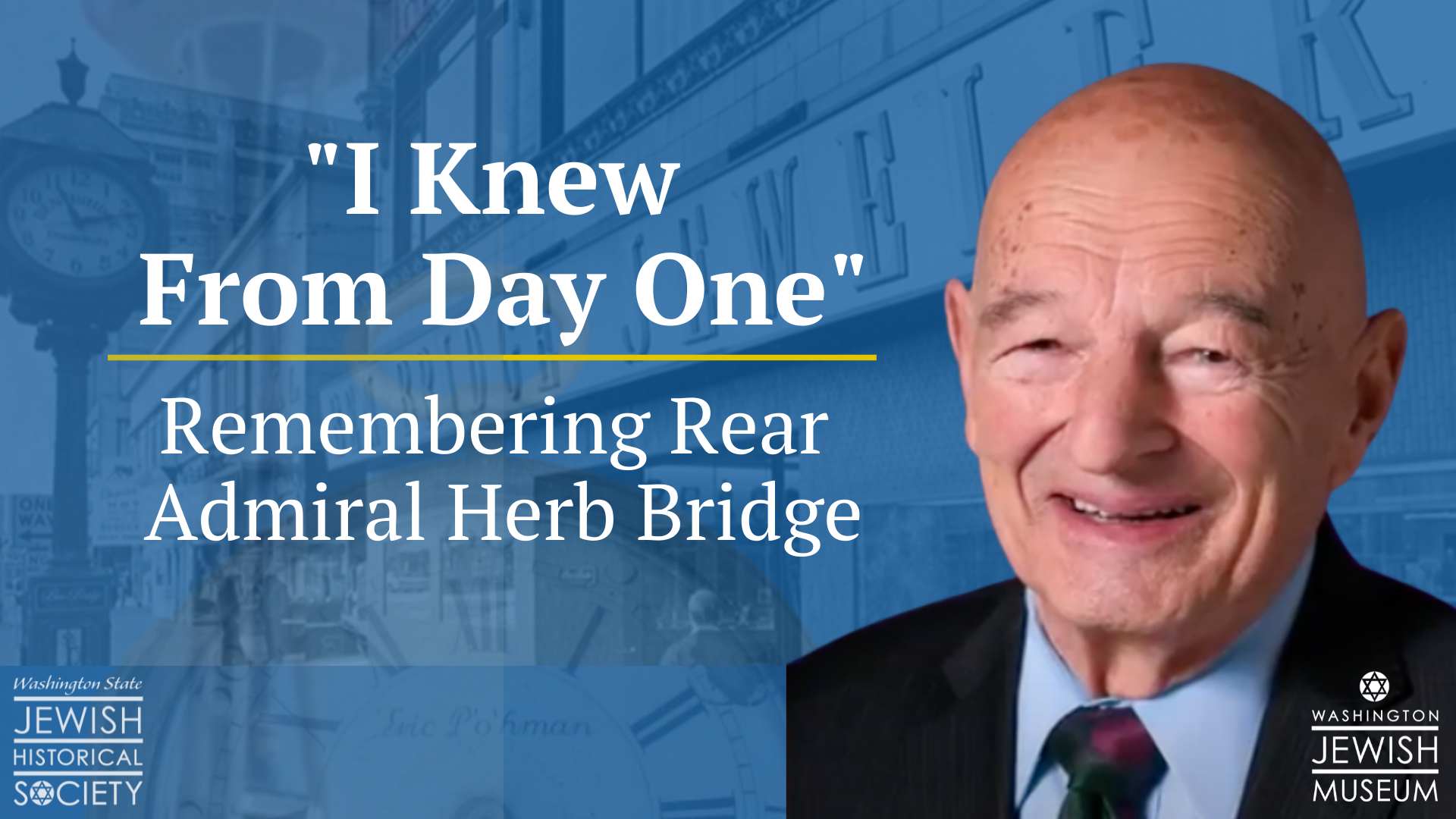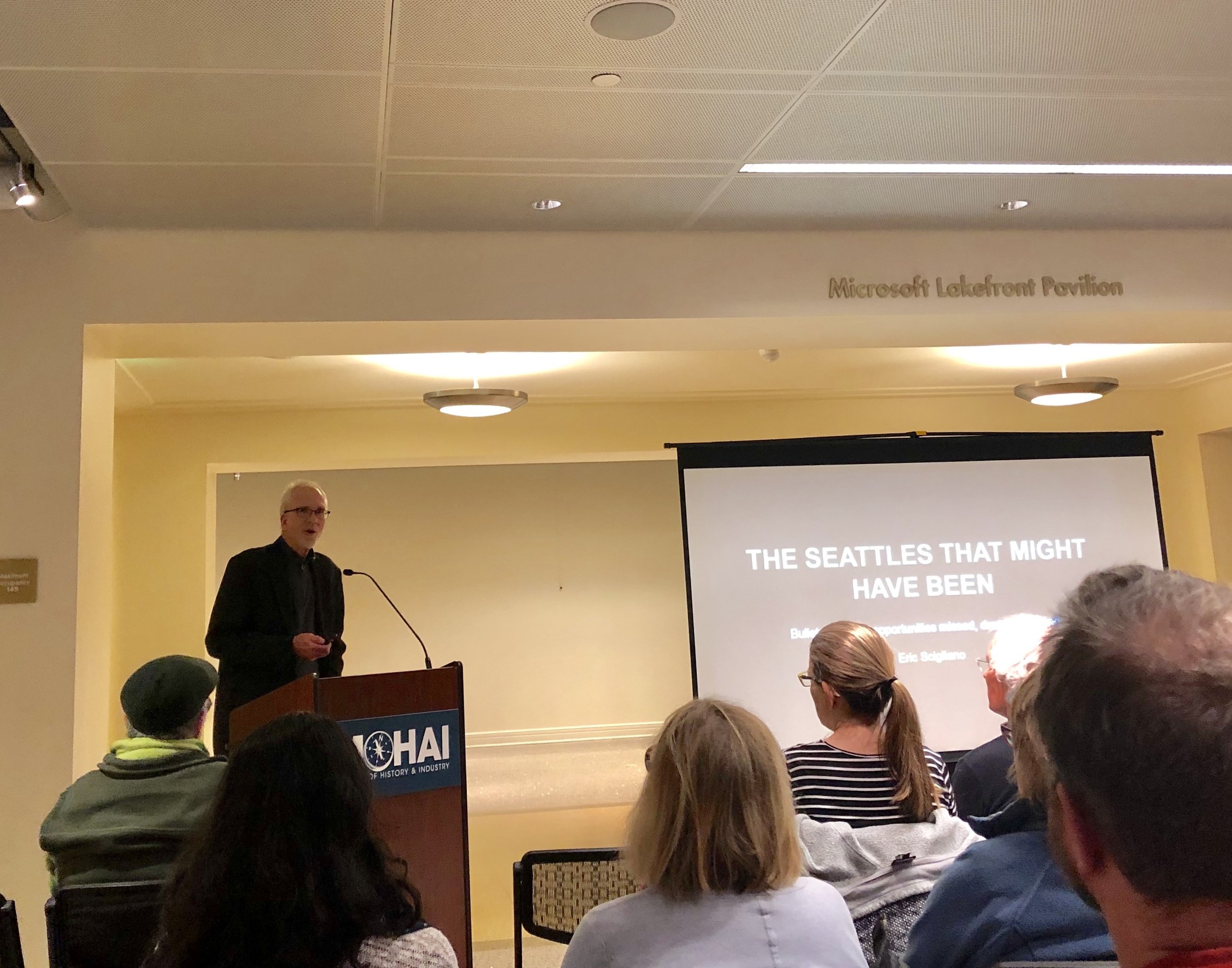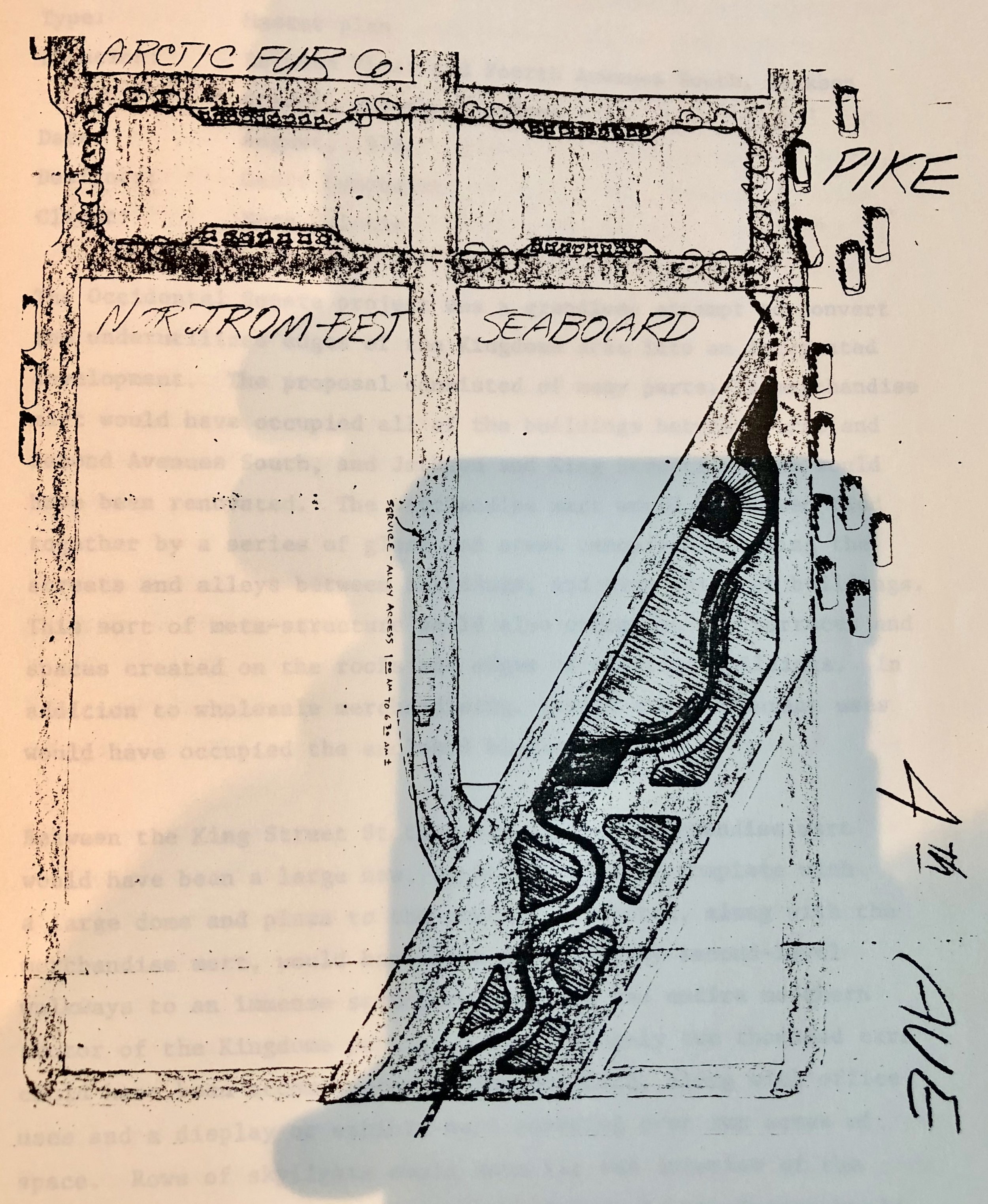"I Knew From Day One": Remembering Rear Admiral Herb Bridge
Announcing the release of the Washington Jewish Museum digital exhibit and opening
of MOHAI's Rear Admiral Herb Bridge Welcome Hall
Title screen for “I Knew From Day One”: Remembering Rear Admiral Herb Bridge
Washington Jewish Museum digital exhibit.
I Knew From Day One brings together oral histories, photographs, and most vividly,
digitized Bridge family home movies, providing a glimpse of Herb Bridge’s enormous
impact, leadership, and inspiration, together with his wife Shirley and generations of the
Bridge family.
About Herb and Shirley Bridge
Herbert “Herb” Marvin Bridge (March 14, 1925 - April 2, 2018) was born in Seattle,
Washington, the first child of Benjamin “Ben” and Sally (Silverman) Bridge. In 1948,
Herb married Shirley Selesnick and raised a family, introducing his two sons to the
jewelry business that spanned both branches of the family tree.
For six decades, Herb and Shirley were active civic leaders and philanthropists – driven
to action with a desire to heal, improve, and repair what is wrong.
I Knew From Day One explores the following themes:
● The Bridge family’s immigration to the U.S. from Poland and Russia
● Herb Bridge’s Navy years and military career
● Herb Bridge’s marriage and six-decade partnership with Shirley (Selesnick)
Bridge and raising their children
● Ben Bridge Jeweler, a family business
● Advocacy for downtown Seattle and local community leadership
● Tradition of tikkun olam - “Repair of the world”
The exhibit includes materials from the Bridge family; Washington State Jewish
Archives, University of Washington Libraries, Special Collections; Seattle Public
Schools Archives; Museum of History & Industry (MOHAI); and the National Museum of
American History, Smithsonian Institution.
The exhibit can be viewed online with the Washington Jewish Museum (WJM) and can
be seen along with the new interpretation area at MOHAI, 860 Terry Avenue N, Seattle.
The WJM exhibit curators were Ryan Anthony Donaldson and Jennie Diaz.
Special thanks to the Bridge family for their generous support of this exhibit.
Jon Bridge and Leonard Garfield, Executive Director, MOHAI, from the opening
reception. MOHAI is located at 860 Terry Avenue North in Seattle’s South Lake Union
neighborhood.
MOHAI Herb Bridge Welcome Hall Dedication
On October 17, 2021, 60 attendees gathered together to dedicate the new Herb Bridge
Welcome Hall at the Museum of History & Industry (MOHAI) at the Microsoft Lakefront
Pavilion.
Introductory remarks were made by Leonard Garfield, MOHAI Executive Director; Ryan
Anthony Donaldson, Washington State Jewish Archives Collections Strategy Manager &
Archivist; Jon Bridge, son of Herb and Shirley Bridge and MOHAI Board member; and
Maria Denny, President of the MOHAI Board of Trustees.
Following the remarks the Bridge family cut the ribbon, officially opening the Welcome
Hall to the public for the first time. The Welcome Hall is accessible on the right-hand
side just past the main entrance doors to the museum.
The Museum of History and Industry (MOHAI) Rear Admiral Herb Bridge Welcome Hall
launched with a dedication event on Sunday, October 17th. The Welcome Hall, which is
immediately accessible beyond the front entrance doors on the right, (pictured above
during the ribbon cutting ceremony) includes new interpretive panels and an orientation
video that complements the WSJHS digital exhibit.
From left: Leonard Garfield, MOHAI Executive Director, with Ryan Anthony Donaldson,
exhibit co-curator and Washington State Jewish Archives Collections Strategy Manager
and Archivist.
Rear Admiral Herb Bridge Welcome Hall exhibit on display at MOHAI. The two panels
pictured include “Naval Officer, Merchant, Philanthropist” and “The Naval Reserve
Armory.” The Welcome Hall is accessible on the right-hand side just past the main
entrance doors to the museum.
Pictured above, the Rear Admiral Herb Bridge Welcome Hall orientation touchscreen
video alongside the QR code linking visitors to the Washington Jewish Museum
digital exhibit.

















